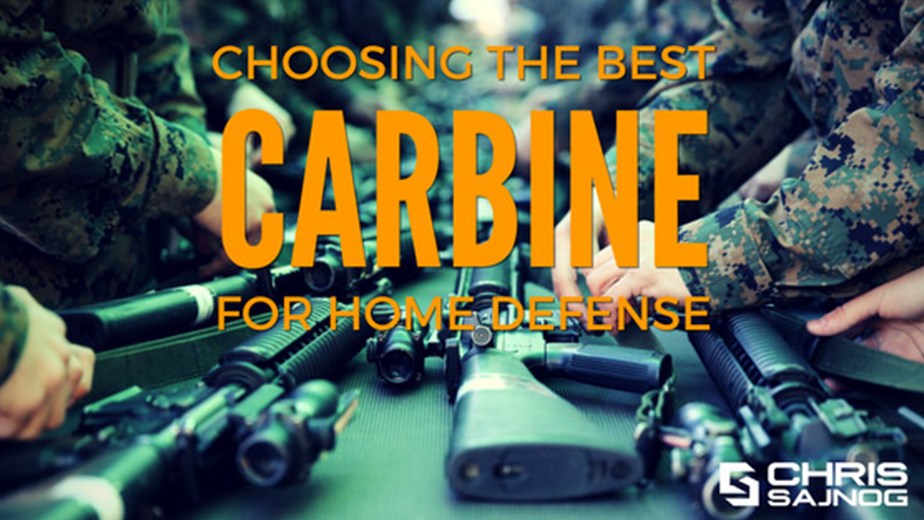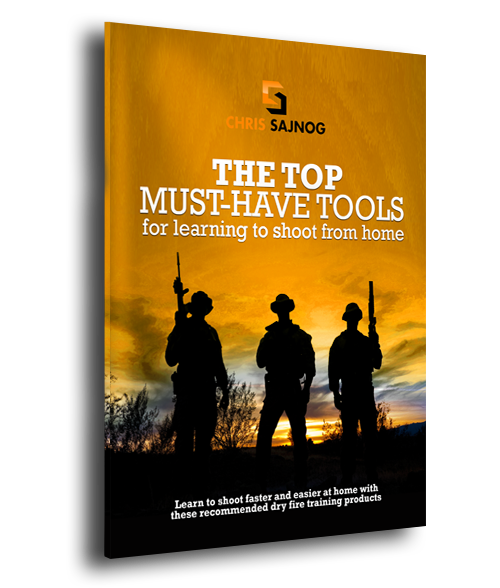Best Home Defense Carbine – Direct Impingement Vs Gas Piston
Ok, folks, here I go. Yup, I am going to open that can of worms. Time to investigate to find out what the best carbine is for all time. First I’ll say that I am a fan of both operating systems and both will work well as long as you purchase your gun from a quality firearms maker. The choice has more to do with how your gun feels in your hand and what you are looking for in the best home defense carbine operating system.
That said, let’s have a little marksman history lesson before we go choosing the best defense carbine in the direct impingement Vs. gas pistol debate.
The gas direct impact system or direct impingement was first introduced in the AR format in the early 1950s by a man who needs no introduction in our community…Eugene Stoner. What a kick ass assault rifle that was in its day! It was used by Navy SEALs in Vietnam and this operating system quickly became the weapon of choice for the Men with Green Faces.
The gas piston was used by a name that might be familiar to some…Mikhail Kalashnikov and his AK-47, the most widely used assault rifle in the world. High tech and timeless, the AK-47 is the poster child for gas pistons.
Since I’m sure you all know both names and both operating systems, how do you go about selecting the best carbine for home defense? Let’s dive into the direct impingement Vs. piston discussion.
Direct Impingement vs Gas Piston Operating Systems
As for direct impingement vs gas piston. The AR is a self-loading rifle that performs a basic set of functions without manual assistance from the operator. After the trigger is pressed, the gun fires a cartridge, extracts the fired case, ejects it, picks up a fresh cartridge and transfers it from the magazine into the chamber, locks the breech and cocks the hammer to return the rifle to battery with a round in the chamber. It’s really a straightforward mechanical operation, and there have been a variety of ingenious solutions to this over the years.

Two of those solutions for the best carbine are the direct gas impingement system and the gas piston system. So begins our direct impingement Vs. piston investigation.
Eugene Stoner utilized the impingement system in the AR. It works by bleeding propellant gasses through a port at the end of the barrel and channeling the gasses back through a tube to directly strike, or impinge, a bolt carrier, thereby pushing it rearward to extract and eject the fired case. As the case is propelled forward by a spring, a fresh round is stripped and pushed into the barrel’s chamber.
The direct impingement shines in longer barrel (18″ and up) applications where accuracy, particularly at longer ranges, is the goal. The simplicity — light weight and low cost for the standard parts — of the direct impingement system makes it the choice for most non-full-auto applications. As far as defense carbine choices go, you aren’t choosing wrong with the AR impingement system.
A gas piston system is what Mikhail Kalashnikov used in his AK-47. The piston system also relies on propellant gasses that are bled through a small hole in the barrel, but instead of the gasses traveling through a tube to impact a bolt carrier, the gasses are contained in a cylinder in which there is a piston. The gasses push the piston, which in turn is connected by a rod to a bolt carrier that moves to the rear to extract and eject the fired case. Moving forward from spring pressure, it strips a fresh round from a magazine, chambers it and locks into battery.
The gas piston system shines in short barrel (e.g., under 16″) applications. The high port pressures found in short barrels can quickly erode the gas port. A well-designed piston system can accommodate the changes in port size. For much the same reason, gas piston designs can be more tolerant of suppressors. The advantages also increase where full-auto is concerned. So, the AK is also a great defense carbine choice.
So as for direct impingement Vs. piston…
Finding the Best Home Defense Carbine
So after that history and explanation, we still haven’t picked a favorite. That’s because, like most issues near and dear to the marksman, there isn’t a right or wrong answer in the direct impingement Vs. piston discussion. Choosing the best defense carbine is about you and yours.
Let’s hit some quick pros and cons on these systems as you try to determine the best carbine for home defense, the best carbine to protect you and your family. I know there are more, but I think these are the important ones:

Direct Impingement Pros:
- Free floated barrels are practical; the gas tube is the only (very minor) exception to floating free
- Simple construction, inexpensive, nothing to wear, foul or corrode
- Lightweight
- In the AR, readily available standard parts at extremely competitive prices
Direct Impingement Cons:
- Sensitive to ammo variations
- Much of the spent gas ends up inside the receiver

Gas Piston Pros:
- Spent gas is vented externally
- More tolerance of ammo variations
Gas Piston Cons:
- Can’t free float to the same degree as direct impingement
- Heavier
- More complex, more parts to foul, corrode or go bad.
- Much more expensive
- No standard, every system is different
And the Best Carbine for Home Defense is…
Alright, in the battle of direct impingement Vs. piston, we’ll call it a draw.
If you don’t regularly fire 1,000 rounds or more in a session, especially if it’s not full-auto, and you have a civilian-legal barrel length, you may well be better off investing in more ammo, paying for a professional carbine course and becoming more proficient with your direct impingement system than spending the extra money on a gas piston system. I have to say that this will be the case for 99% of civilian shooters. With it’s easier maintenance and lower price tag, direct impingement is the logical carbine.
So, with only a little hesitation, I recommend the direct impingement for your best home defense carbine. Is it unequivocally the best carbine? There are no right answers to some questions, and this direct impingement Vs. piston is one of them.
On the other hand, if you’ve got a bunch of cash burning a hole in your pocket or if you tend to fire on full-auto when practicing for the inevitable zombie attack, then gas piston will be your best bet. As far as coolness factor, this is the defense carbine choice of many a marksman.
Choosing a piston system means choosing more maintenance and higher costs down the line. That said, for many of you, a weapon like this is your pride and joy, and you will love taking the time to clean and maintain your weapon. For those of you firing 2,000 rounds in a practice session, your personal best carbine may well be a gas piston system.
Ultimately, if you try out a weapon and it feels right in your hands, don’t let the operating system stop you from using that weapon. Your best carbine will be determined by a multitude of factors, and operating system is only one of them. When choosing a carbine for home defense, go with your gut, and don’t let your fears about using the “best” operating system keep you away from your personal best carbine!

Best Carbine for You
How to Choose the Best Carbine for Your Needs
Like many marksman topics, choosing the best carbine has more to do with who you are and how you shoot. There is no ultimate best carbine in the world. If there were, this would be easy! Just like developing your everyday carry bag or selecting your tactical gear, your hunt for the best carbine for home defense should start by identifying your needs, budget and expectations for performance.
Let’s look at some popular choices of defense carbines. This is by no means an exhaustive list, but these are some of my favorite defense carbines, and your best carbine might be among them.
cZ USA- Scorpion Evo 3 S 1 Carbine Faux Suppressor 16.2IN 9mm 20+1RD
The Scorpion is a popular choice for defense carbines because of its adjustable trigger and the ease of customization. This is one of the most comfortable carbines to operate, and highly rates with its slim profile and folding stock. The best carbine for home defense is the one that you are most comfortable operating. If you have ever felt uncomfortable or burdened by a carbine that stretches your reach you might find the Scorpion to be your best carbine option.
Beretta CX4 Storm
The Beretta is lightweight and compact compared with many other carbines and handles much the same way Beretta tactical pistols do. If you have experience with tactical pistols, you will likely find the Beretta to be an easy to handle defense carbine. Along with its customization options the Beretta CX4 Storm is fully compatible with any full-size Beretta PX4, 90-series and 8000 series magazines (using optional adapters). That means, if you already own and enjoy other Beretta weapons, you save yourself the trouble of buying a ton of extra magazines. The Beretta is also one of the easiest defense carbines to take apart and reassemble. Over all, the Beretta is easy to use, but sacrifices nothing in the hands of a master. If you are just learning to shoot, the Beretta will grow with your skills, making this a candidate for your best carbine.
kel-tec sub-2000
The Kel-tec gets its fame from it’s incredible folding ability. Fully folded, the Kel-tec measures just over 16 inches, making it one of the most portable carbines. Don’t be fooled by it’s compact nature, however, the kel-tec sacrifices nothing in range. The Kel-tec is also one of the more affordable defense carbines, making it ideal for a beginner. With prices under $500, you are free to spend that extra cash on customization, ensuring that your defense carbine operates exactly the way you want it to. Being lightweight and being fully foldable, you must be thinking, where is the catch? The one complaint I have about the Kel-tec is the recoil. This weapon has put function front and center and sacrificed some comfort in return. Not only will you feel the mechanism against your cheek every round, but less experienced marksman may find the sights difficult to operate. So, given its price and compact nature, the kel-tec seems to be a beginner option, but proper operation of the kel-tec demands some expertise and handling knowledge. If you are confident in your skills and familiarity with this kind of weapon, the kel-tec might well be your personal best carbine for home defense.

Your Best Carbine
No matter which one you choose in the battle of direct impingement Vs. piston operating systems, make sure you always practice safe weapon handling, do lots of dry weapons training and keep your bang-stick clean.
Leave a reply below to share your thoughts and experiences with either of these systems, or the direct impingement Vs. piston system question. Let me know your choice for the best home defense carbine – direct impingement vs gas piston. After you’ve done that, let’s go shooting!



